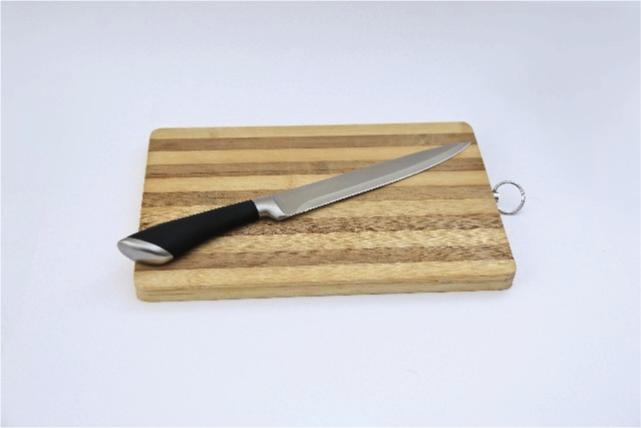

The making of cutlery is a centuries-old craftsmanship in Japan, closely related to the tradition of Samurai sword-making. Japanese kitchen knives are referred to as “Hōchō”, and they are famous for the sharpness and durability. Some types achieve a hardness of up to 68 HRC (rockwell hardness)!
Japanese cooks regard their set of Hōchō as their most important kitchen tools and would never let anybody else use these knives, often even not for sharpening them.
There are several types for the different kinds of ingredients like fish, meat, or vegetables. The probably best known Hōchō is the “Santoku” knife, which means “(a knife for) the three virtues”, where these virtues are fish, meat, and vegetables.
But many ingredients demand special knives, like the “Deba Bōchō”, which is a special knive for fish filleting, or the “Nakiri / Usuba Hōchō”, which are used for vegetables. The “Tako Hiki” or the “Yanagiba-Hōchō” are used for the slicing of fish, like octopus. Based on the Western chefs’ knives is the so-called “Gyūtō”, a knife for cutting meat. The “Petty” is a small knife used for fruit-peeling and similar purposes.
Hōchō are made of so-called “Aogami” (blue-paper) or “Shirogami” (white-paper) steel – this name comes from the color of the paper this steel was originally delivered in. Both contain carbon, where Aogami contains tungsten and chrome as alloying elements which makes it harder and more durable, whereas Shirogami doesn’t contain alloying elements and is easier to sharpen.
Both kinds of steel are not stainless and demand a good deal of care. It is recommended to keep the blades dry and store the knives after use in newspaper or (perfume-free) paper tissue.
As for the forging styles, there are the “kasumi” knives, which use two different materials, whereas the “honyaki” knives use one material. This makes the latter sharper, but less forgiving. Today, many knives are “kasumi” knives, as they are made of two or three layers of different hardness and offer a good balance between durability and ease of care.
Maybe you would like to try out the famous sharpness, precision and durability of original Japanese Hōchō? For those who make their first steps – or rather their first cuts – with Japanese cutlery, the choice of a Santoku and maybe a Petty can be recommended. But please take care of your fingers, as these knives are incredibly sharp!